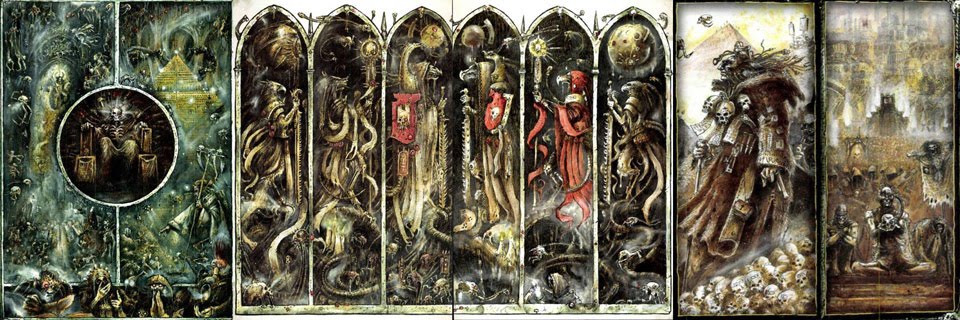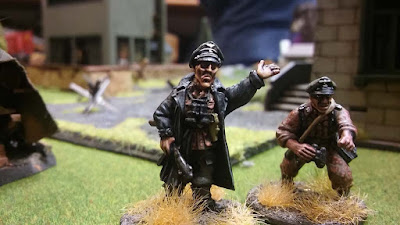Many years ago I´ve brought two small New Israeli space ships from GZG just for fun / hoping that someday I will play with them. I´ve created some small fluff for the marines serving aboard these ships. Of course this was for Full Thrust setting, but Israel in space can be exported to various other sci-fi settings.
Since I´ve decided upon playing Tomorrow´s War rules, it is rather obvious that I wish to follow their setting.
The Beginning. This is no pile of shame, but GZG New Israel fresh from package.
Israel
Israel
expanded into space along their allies from USA and EU and colonized few small
planets and asteroids of no big importance. Not long after the First Glory War
they colonized New Eilat, an Earth-like planet. Due to the long-lasting political instability in
the Middle East, Israel moved most of its industrial and research assets
to New Eilat.
Even
though Israel did not bough a piece of land on Glory as almost every other big
player, an influential diaspora of European Jews did. They founded a state
named Shtetl on Glory. Shtetl keeps a small professional army and local militia
but is under Israeli protection. This means that Israel forces are frequently
deployed on Glory. And on the forefront stood the Mobile Infantry regiments an
elite strike force of the Israel Navy.
Command element of the Mobile Infantry platoon in KOFA combat armour
Israel Mobile Infantry
The Mobile
Infantry Platoon is part of the Mobile Infantry
Regiments (MIR or גדוד חיל
רגלים נייד) serving under the Israeli Navy (IN).
Their
main task is to handle both void-combat and ground-based operations.
With
duties ranging from boarding actions in space to quick hit-and-run missions on
the ground, they are the backbone of the NIN.
A
platoon is a small combat unit, easily transported by any IN spaceship and
deployed at once by a dedicated dropship.
Their
weapons and support elements enable them to deal with any obstacle, ranging
from armour, through well-trained infantry to even aerial threats.
The MIR
has access to the latest technology of Israel’s military industry as they are
on the forefront of most military operations.
Their
most characteristic mark is the KOFA combat armour, which can be used
both in void and atmospheric conditions.
The KOFA
armour offers considerable protection, enhances its wearer´s carrying capacity
and strength and comes with onboard Medical AI and casualty assist gear.
A platoon
is formed by 36 infantrymen in 4 APCs (8 crew) and 14 crew in 6 support
vehicles.
It also
contains 2 UAVs, 4 autonomous MULEs and a variable number of smaller drones.
The
crew can and will fight if needed, as they went through the same training as
the infantrymen. They also frequently rotate within the regiment in crew /
infantrymen roles. They all wear KOFA power armour.
This
force can be deployed in one go by a single “Khaver” dropship and is the
smallest tactical unit transported on IN ships.
Mobile Infantry Platoon Platoon Organization
Command
Squad
3x Mobile
Squad
Support
Element
Command
Squad
“Achzarit”
APC
Driver
with TIWI-cTAR 83
Gunner
with TIWI-cTAR 83
Lieutenant
with TIWI-cTAR 83
Medic with
TIWI-cTAR 83
Coms
Operator with TIWI-TAR 83
Specialist
with YET-MPPC*
Rifleman
with TIWI-cTAR 83
Specialist
with GDS-Egroph 5*
Rifleman
with TIWI-cTAR 83
Specialist
with GDS-Egroph 5*
Rifleman
with TIWI-cTAR 83
*heavy
weapon team with one operator and one rifleman. In void-combat they use special
engineer weapons instead of heavy weapons.
Command squad deployed on Glory
3x Assault
Squad
“Achzarit”
APC
Driver
with TIWI-cTAR 83
Gunner
with TIWI-cTAR 83
Sergeant
with TIWI-gTAR 83*
Coms Operator with TIWI-TAR 83
Rifleman
with TIWI-TAR 83
Marksman
with TIWI-sTAR 83
Specialist with TIWI-GSR 5
Team Leader with TIWI-gTAR 83
Rifleman
with TIWI-TAR 83
Rifleman
with TIWI-TAR 83
Grenadier with TIWI-TAR 83 and GDS-Hutra 3
Support Element
2x “Akhot”
Recon Bike
Pathfinder
with TIWI-cTAR 83
2x “Namer”
Mobile Gun Support
Commander
with TIWI-cTAR 83
Crew with
TIWI-cTAR 83
Crew with
TIWI-cTAR 83
2x “Sholef”
Missile Support
Commander
with TIWI-cTAR 83
Crew with
TIWI-cTAR 83
Crew with
TIWI-cTAR 83
2x
“Beitsa” Drone transported by Missile Support. Operated by Coms Operators.
14x “Dror”
Drone transported by APC
Operated
by Coms Operators.
4x
“Preda” MULE
*a note to squad composition during the boarding actions or when vehicles are not available:
- drivers and gunners of the "Achzarit" APC will joint their squads
- crew of "Namer" and "Sholef" AFVs will form their own squad along with "Akhot" bikers
Weapons
TIWI-TAR
83:
Standard
assault rifle of Mobile Infantry Regiments.
Equipped
with advanced optics, HUD link, gun camera and TAG (Target Acquisition and
Guidance – a target designator for air, artillery, or orbital strikes) unit.
The gun
itself have a decent rate of fire so Assault squads can exchange SAWs for other
weapons.
TIWI-cTAR
83:
A
compact, short-barrel variant intended for Command squads and vehicle
crews.
TIWI-gTAR
83:
TAR 83
equipped by under-barrel semi-automatic grenade launcher with auto loader.
TIWI-sTAR
83:
Longer
variant with better optics or squad dedicated marksman.
TIWI-GSR
5:
Gauss-based,
semi-automatic sniper rifle.
A man-portable
gauss gun, which fires a .50 calibre, super-dense penetrator at hyper-velocity.
Capable of killing AFS (Armoured Fighting Suits) with one shot and causing
combat ineffectiveness on full-sized AFVs (Armoured Fighting Vehicles)
This
weapon has been used successfully in both sniper and anti-material roles.
GDS-Hutra
3:
This
man-portable light missile launcher utilizes a launch system with advanced
sensors and targeting capabilities. The missile can be used as a
“fire-and-forget” ATGM, HE, Thermobaric or AA.
TIWI-Negev
33:
Standard
SAW of Israeli Defence Forces.
A fully
automatic weapon based on gauss technology, utilizing .30 calibre ammunition.
Equipped
with advanced optics, HUD link, gun camera and bipod.
GDS-Egroph
5:
Heavy
missile system designed for AT and AA roles commonly found on vehicles, but
also available in a man-portable version for platoon support.
Also
has both HE and thermobaric capabilities.
YET-MPPC:
The
standard medium plasma support weapon of Israeli Defence Forces. Highly
effective in both anti-personnel and anti-tank mode.
TIWI
(Trinity-Israel Weapon Industries)
GDS
(Gabriel Defence Systems)
YET
(Yitzchak Energy Technologies)
And this is it so far, will add vehicles later




























































